
Common Ebike Motor Problems and How to Fix Them?
Introduction
An ebike motor problem can quickly turn a joyful ride into a frustrating experience. We know that dealing with a broken electric bike motor is probably the last thing you want. This guide addresses your main concern: Common Ebike Motor Problems and How to Fix Them. Many motor issues happen often and can be fixed if you know what to do.
We'll help you understand your ebike motor, spot warning signs, and apply practical DIY fixes. We'll also cover important maintenance tips and tell you when it's best to get professional help. Our goal is to give you clear steps to get your ebike motor running smoothly again.
Understanding Your Ebike Motor: The Basics for Effective Troubleshooting
To fix your ebike motor problems, you need to know the basics of how it works. This knowledge will help you figure out what might be wrong. An ebike motor changes electrical energy from the battery into mechanical energy that helps you pedal or moves the bike. This happens when magnets and coils work together to create spinning power.
Ebike motors come in two main types, each with their own common problems:
-
Hub Motors (Front/Rear): These are built into the wheel hub. They're simpler and usually cheaper. Problems often happen because they're exposed to road conditions and their wires can get stressed where they enter the axle. When checking hub motors, first look at the outside wiring and make sure the axle is secure to prevent damage to the wires.
-
Mid-Drive Motors: These sit at the bike's crankset and put power directly into the drivetrain. They often feel more natural to ride and are better at climbing hills by using the bike's gears. Problems can be related to how they connect to the drivetrain or their complex sensor systems. When diagnosing mid-drive issues, you need to figure out if the problem is with the motor or just a normal bike drivetrain issue.
The key parts of an ebike motor system include:
-
The Motor Unit itself: The main part that creates power.
-
Controller: Often called the "brain," it manages how power flows from the battery to the motor based on what the sensors tell it.
-
Battery (and its Battery Management System - BMS): Supplies the electrical power; the BMS keeps the battery safe.
-
Sensors: These include speed sensors, cadence or torque sensors (that detect how hard you're pedaling), and brake sensors (which stop the motor when you brake).
-
Wiring Harness & Connectors: All the wires and plugs that connect the electrical parts.
-
Display Unit: Shows riding information, power levels, and often error codes.
Understanding how these parts work together is the first step in fixing Common Ebike Motor Problems and How to Fix Them.
Spotting the Signs: Identifying Common Ebike Motor Problems & Initial Checks
Finding the specific ebike motor problem starts with watching for symptoms and doing some quick checks. This organized approach saves time and helps narrow down what might be causing the issue.
We've grouped common symptoms to help you understand what could be happening with your ebike motor.
Symptom 1: Motor Fails to Start or Provides No Assistance
-
Possible causes: The battery might be off, empty, or not connecting well. A main power connection to the motor or controller could be loose. A brake sensor might be stuck, telling the system the brakes are on. Less often, a fuse could be blown, or there might be a bigger controller problem.
-
Quick checks: First, make sure your battery is on and has enough charge. Look at and reconnect the main connections between the battery, controller, and ebike motor. Check that your brake levers are fully returning and not stuck, as this can stop the motor from working.
Symptom 2: Intermittent Power Delivery or Motor Cutting Out
-
Possible causes: This often happens because of loose wiring, especially important sensor wires or the thicker motor phase wires. A faulty sensor, motor overheating during a ride, or a battery connection problem that only happens under pressure (like going uphill) can also cause this.
-
Quick checks: Carefully look at all wiring you can reach for any damage, pinching, or looseness, paying special attention to connectors. If your ebike has external speed or cadence sensors, check their position and make sure they're clean.
Symptom 3: Unusual Noises from the Motor (Grinding, Clicking, Whining, Humming)
-
Possible causes: Loose motor mounting bolts can cause rattling or clunking. Debris stuck in or around the motor casing might make scraping sounds. Worn internal gears or failing bearings can cause grinding or clicking. A distinct electrical humming, especially if the motor struggles to turn, could mean a short in the motor wires or a controller problem.
-
Quick checks: Make sure all ebike motor mounting bolts are tight. Look at the motor casing and surrounding area for any trapped debris.
Symptom 4: Reduced Power, Sluggish Performance, or Lack of Torque
-
Possible causes: A low battery will naturally give less power. You might be in a lower power mode than you thought. Dragging brakes can make the ebike motor feel weak. Sometimes, a failing motor part or a controller fault could be the reason.
-
Quick checks: Check that your battery has enough charge. Double-check which power level you've selected on the display. Lift the wheels and spin them to make sure the brakes aren't dragging.
Symptom 5: Motor Overheating
-
Possible causes: Pushing the ebike motor too hard (like carrying heavy loads or climbing steep hills for a long time, especially in the wrong gear for mid-drives) can make it overheat. Internal friction from failing parts or an electrical fault can also create too much heat. Not enough cooling, maybe from blockages around the motor casing, could add to the problem.
-
Quick checks: If you think it's overheating, let the motor cool down completely. Make sure nothing is blocking airflow around the ebike motor. A motor is generally overheating if the casing is too hot to touch comfortably for more than a second, or if you notice a burning smell. While specific safe temperatures vary, external temperatures above 60-80°C (140-176°F) might indicate a problem.
Symptom 6: Error Codes on the Ebike Display
-
Possible causes: Your ebike system has found a specific fault. This could be related to a sensor, the ebike motor itself, the controller, or the battery.
-
Quick checks: Look in your ebike's user manual. It should list error codes and what they mean, often suggesting first troubleshooting steps.
To help you connect these symptoms to potential actions, here's a quick guide:
| Symptom | Likely Areas to Investigate | Simple Initial Checks |
| Motor Fails to Start / No Assistance | Battery, Main Power Connections, Brake Sensors, Fuse, Controller | Battery on & charged? Connections secure? Brake levers fully returned? |
| Intermittent Power / Motor Cutting Out | Wiring (Sensor/Phase), Sensors, Overheating, Battery Connection | Inspect all visible wires & connectors. Check sensor alignment/cleanliness. Let motor cool if hot. |
| Unusual Noises (Grinding, Clicking, Whining, Humming) | Motor Mounts, Debris, Internal Motor (Gears/Bearings), Phase Wires | Motor bolts tight? Any debris near motor? Differentiate from other bike noises. Humming may need pro attention. |
| Reduced Power / Sluggish Performance / Lack of Torque | Battery Charge, Assist Mode, Brakes, Motor/Controller Health | Battery charged? Correct assist level selected? Brakes dragging? |
| Motor Overheating | Riding Conditions, Motor Obstructions, Internal Fault | Allow to cool. Check for airflow obstructions. Reduce load/demand. |
| Error Codes on Display | System-Specific Fault (Sensor, Motor, Controller, Battery) | Consult ebike manual for error code meaning and recommended actions. |
This table should help you with your first steps to diagnose Common Ebike Motor Problems and How to Fix Them.
DIY Fixes for Common Ebike Motor Problems: A Step-by-Step Guide
Once you know the symptom, you can often fix many Common Ebike Motor Problems and How to Fix Them yourself. This section gives you step-by-step guidance.
Before you start any work, remember these general troubleshooting principles:
-
Safety First: Always disconnect the battery before working on any electrical parts of your ebike motor system. This prevents short circuits and possible injury.
-
Tools Needed: You'll probably need basic bicycle tools (Allen keys, wrenches, screwdrivers). A multimeter is very helpful for electrical checks. Contact cleaner and zip ties can also be useful.
-
Systematic Approach: Always check the simplest and most obvious things first. Don't jump to complex solutions before ruling out easy fixes.
Now, let's look at detailed fixes, organized by the problem types we discussed earlier.
Fixing "Motor Fails to Start / No Assistance":
-
Battery Troubleshooting:
Verify Charge: Make sure your battery shows enough charge, both on its indicator (if it has one) and your ebike display.
Secure Connection: Turn off the battery, remove it from the bike (if possible), and check the connector pins on both the battery and the bike's cradle. Look for any bent, corroded, pushed-in, or dirty pins. Clean with a dry cloth or a soft brush. If using contact cleaner, make sure it's safe for plastic and let it dry completely.
Reseat Battery: Carefully put the battery back, making sure it clicks securely into place. Sometimes a loose battery is the only issue.
Visible Damage: Check the battery case for any cracks or signs of damage. If damaged, do not use it and get professional help.
-
Wiring and Connector Integrity:
Visual Inspection: Follow the main power lines from the battery to the controller, and from the controller to the ebike motor. Also, look at wires leading to sensors (speed, cadence/torque), the throttle (if you have one), and the display.
Look For: Obvious breaks, cuts, scrapes, or areas where wires might be pinched or stretched. Pay special attention to where wires enter components or bend during riding.
Connector Check: Carefully disconnect and inspect major connectors. Look for corrosion (green or white powdery deposits), bent pins, or pins that have pushed back into the connector housing.
Cleaning Connectors: Use a specialized electrical contact cleaner spray on suspect connectors. Let it dry completely before reconnecting. Make sure connectors are pushed together firmly until they click or seat fully.
-
Brake Lever/Inhibitor Switch:
Function Check: Most ebikes have motor cut-off switches connected to the brake levers. If a brake lever is slightly stuck or the switch is faulty/misaligned, it can continuously tell the controller to cut motor power.
Test: Make sure brake levers move freely and return fully. You can sometimes (for testing only and if accessible) temporarily disconnect the brake cut-off wire at the controller or lever to see if the motor engages. If it does, the issue is with that brake sensor/lever. Remember to reconnect it for safe riding.
-
Checking and Replacing Fuses (If Accessible):
Locate Fuse: Some ebike systems, particularly the battery or controller, may have a fuse. Check your manual to see if one is present and where it is.
Inspect/Test: If you find a fuse, remove it (with the battery disconnected) and look at it for a broken filament. If you have a multimeter, you can test it for continuity.
Replace: If blown, replace it with an identical fuse (same amperage and voltage rating). Using a wrong fuse can cause more damage.
Fixing "Intermittent Power / Motor Cutting Out":
-
Advanced Wiring Inspection:
Stress Points: Focus on areas where wires might bend, rub against the frame, or pass through tight spaces. Intermittent issues often come from wires that are partially broken inside or making inconsistent contact.
Secure Wires: Use zip ties or frame clips to secure any loose or hanging wires, preventing future strain or rubbing.
-
Sensor Checks:
Speed/Cadence Sensor: If your ebike motor uses an external speed sensor (often a magnet on a spoke and a sensor on the frame/fork) or a cadence sensor (magnet on a crank arm and sensor on the frame), make sure they are clean and correctly aligned. The gap between magnet and sensor is usually important (typically a few millimeters – check your manual).
Sensor Wire: Follow the wire from the sensor back to the controller, checking for damage or loose connections.
-
Heat-Related Cut-Outs:
Motor Obstruction: Make sure nothing is blocking airflow around your ebike motor casing, like mud, bags, or accessories.
Controller Thermal Protection: Controllers often have thermal protection that reduces or cuts power if they or the motor get too hot. If cut-outs happen mainly on long, hard rides or hot days, it might be the system protecting itself. Let it cool down. If it happens often under normal conditions, there might be an underlying issue causing too much heat.
Fixing "Unusual Noises":
-
Locating the Source: Try to pinpoint if the noise is really from the ebike motor or from another part of the bike (drivetrain, brakes, loose fender, etc.) that might only make noise when the motor is on.
-
Tightening Bolts: Check and tighten all ebike motor mounting bolts and any screws on the motor casing itself. Loose parts can vibrate and create noise.
-
Inspecting for Debris: Look carefully around and, if possible, partially into any openings in the motor casing for small stones, twigs, or other debris that might be caught and causing grinding or scraping sounds.
-
Internal Noises: Be aware that ongoing grinding, clicking, or whining noises that continue after these external checks often point to internal ebike motor issues, such as worn gears in a geared hub motor or failing bearings. These usually need professional disassembly and repair. DIY repair of motor internals is generally not recommended for beginners.
Fixing "Reduced Power / Sluggish Performance":
-
Beyond Quick Checks:
Programmable Controller Settings: Some ebike systems let users adjust controller settings via a display or software. If you've recently made changes, return them to default or known good settings.
Battery Health Assessment: If you have a multimeter, you can do a more in-depth battery health check. A fully charged battery should show its nominal voltage (e.g., 36V, 48V, 52V) or slightly higher when not in use. More importantly, checking the voltage while the motor is working (e.g., by carefully testing while someone tries to engage the motor with the rear wheel lifted, only if safe access is possible and you know what you're doing) can show if the voltage drops too much. A big drop indicates a weak or failing battery. This is an advanced check; safety comes first.
Advanced Diagnostics: Using a Multimeter for Basic Electrical Checks
A multimeter can be a very valuable tool for more definite electrical troubleshooting of your ebike motor system, going beyond guesswork. It lets you pinpoint issues like lack of voltage or broken circuits, forming an important part of solving Common Ebike Motor Problems and How to Fix Them.
Safety Precautions When Using a Multimeter with Ebike Systems:
-
Disconnect Battery First: For continuity tests or resistance checks, the system MUST be powered off, and the battery disconnected to avoid damaging the multimeter or ebike parts.
-
Careful Probing for Voltage: When checking live voltage, use sharp, insulated probes. Be extremely careful not to short-circuit terminals by touching probes together or to the frame.
-
Correct Settings: Make sure your multimeter is set to the right function (DC Voltage, Continuity, Resistance) and range before connecting it.
-
If Unsure, Don't Proceed: If you are not comfortable or uncertain about any test, do not try it. Get professional help.
| Test | How to Perform (Simplified) | Expected Reading (Example) | Common Problem if Abnormal |
| Battery Voltage (DC) | Probes on battery +/- terminals. Battery connected. | 36V, 48V, 52V (or slightly higher when charged) | Uncharged/Faulty Battery, BMS issue. |
| Wire Continuity | Probes on each end of a wire. Battery Disconnected! | Beep / ~0 Ohms resistance | Broken wire, bad connector pin. |
| Fuse Continuity | Probes on fuse ends. Fuse removed. Battery Disconnected! | Beep / ~0 Ohms resistance | Blown fuse. |
| Throttle Signal (DC) | Red probe on signal, Black on ground. Throttle connected/bike ON. | ~0.8V (rest) to ~4.2V (full throttle) - varies. | Faulty throttle, wiring issue to throttle, controller issue. |
Using a multimeter requires care, but it's a powerful diagnostic step for your ebike motor system. Remember, safety is most important; for DIYers, these tests help find external wiring or basic component issues. Internal ebike motor or controller circuit board diagnostics are typically beyond DIY scope.
Knowing Your Limits: When to Call a Professional for Ebike Motor Repair
While DIY fixes can solve many Common Ebike Motor Problems and How to Fix Them, it's important to know when a problem is beyond your abilities or tools. Trying to do too much can cause more damage, void warranties, or create unsafe situations.
Here are some warning signs that it's time to call a qualified ebike technician:
Confirmed Internal Motor Problems: If you've done external checks (tightened bolts, cleared debris) and grinding, clicking, or other bad noises continue, or if you find metal debris coming from the ebike motor, it likely means internal gear, bearing, or winding failure.
Suspected Controller Failure: If the ebike motor system is completely dead or acting erratically despite checking all connections, battery, and sensors, the controller (the "brain") might be faulty. Diagnosing and replacing controllers often requires special knowledge.
Complex Battery BMS Issues: If your battery isn't charging, quickly discharging, or showing errors that basic troubleshooting doesn't fix, the internal Battery Management System (BMS) could be the problem. Battery work can be dangerous if not done correctly.
Error Codes Persist: If your ebike display shows error codes that your manual's troubleshooting steps or the DIY fixes in this guide cannot solve, a deeper diagnostic is needed.
Specialized Tools or Software Required: Some ebike motor systems (especially from major brands like Bosch, Shimano, Brose) require proprietary diagnostic software, specialized tools for taking them apart (like bearing pullers/presses), or software updates that only authorized service centers can do.
DIY Attempts Haven't Resolved the Issue: If you've carefully tried the appropriate DIY steps and the ebike motor problem continues, it's time for an expert opinion.
Personal Safety or Skill Limitations are a Concern: If you're uncomfortable with any repair, don't have the necessary tools, or feel a task is beyond your current mechanical or electrical skills, don't risk it. Your safety and the condition of your ebike are most important.
Impact on Warranty:
It's vital to think about your ebike's warranty. Most ebike makers provide a warranty, typically covering the ebike motor and electrical components for one to two years, though this varies greatly between brands. Doing certain DIY repairs, especially opening the ebike motor casing or the controller unit, could void this warranty. Always check your warranty terms before doing significant repairs. Often, if a motor fails under warranty, manufacturers may choose to replace the entire unit rather than repair it.
When you do seek professional help, clearly describe the symptoms, what checks you've already done, and any error codes noted. This helps the technician diagnose the issue more efficiently. Look for bike shops with specific ebike repair experience or dedicated ebike service centers.

Preventative Maintenance: Keeping Your Ebike Motor Running Smoothly
The best way to deal with Common Ebike Motor Problems and How to Fix Them is to prevent them from happening in the first place. Regular maintenance of your ebike motor and its related systems can greatly extend its life, improve reliability, and reduce the chances of unexpected breakdowns and expensive repairs.
This section focuses on prevention strategies, offering long-term value.
Routine Checks & Care for Your Ebike Motor System:
Regular Cleaning: Keep the ebike motor casing and the surrounding area clean. Dirt, grime, salt (from winter roads), and moisture can cause corrosion over time. Use a damp cloth or soft brush; avoid pressure washing directly at the motor or electrical parts.
Connector Care: Periodically (e.g., every few months or after riding in very wet conditions) check key electrical connectors (battery, motor, display, main controller connections). If they look dirty or show early signs of corrosion, disconnect them (battery off!), clean with a dedicated electrical contact cleaner, and let them dry completely before reconnecting. In some cases, especially for connectors exposed to moisture, applying a thin layer of dielectric grease after cleaning can help prevent future corrosion and moisture getting in. Always make sure it doesn't interfere with the electrical contact itself.
Bolt/Fastener Checks: Regularly check that ebike motor mounting bolts and other critical fasteners are secure and tightened to manufacturer specifications if known. Vibrations can loosen these over time.
Wire Management: Inspect all visible wiring for signs of rubbing against the frame or other components, pinching, or strain. Secure loose wires with zip ties or appropriate clips to prevent damage. Make sure there's enough slack for suspension movement or steering without pulling on wires.
Listening for Changes: Pay attention to how your ebike motor sounds and performs. New or unusual noises, or subtle changes in power delivery, can be early warning signs of developing issues. Addressing them early is often easier and cheaper.
Broader System Health for Motor Longevity:
Battery Best Practices: A healthy battery delivers consistent power, reducing strain on the ebike motor and controller. Follow proper charging procedures (don't leave it on the charger indefinitely unless specified by the manufacturer, avoid frequent deep discharges). Store your battery in a cool, dry place, especially for long periods of non-use, and ideally at a partial charge (e.g., 40-60%). Irregular or improper battery charging can contribute to ebike motor system problems.
Avoiding Abuse: Do not consistently overload your ebike motor beyond its design capacity (e.g., carrying too much weight if not designed for it, tackling extreme hills for long periods in too high a gear or too low a power level, which strains the motor). Avoid submerging the ebike motor in water or exposing it to water getting in beyond its specified IP (Ingress Protection) rating.
Firmware/Software Updates: If your ebike system (especially from major brands) supports firmware or software updates, check with your manufacturer or dealer if these are recommended. Updates can sometimes improve performance, efficiency, or fix known bugs.
By including these preventative measures in your routine, you'll be in a much better position to enjoy a reliable ebike motor. For further reading on general component longevity, it's useful understanding ebike component wear and tear, as the motor is part of a larger system.
For the Enthusiast: A Quick Look Inside Ebike Motor Technology
For those curious about the technology powering their ride, this section offers a brief look into the ebike motor. Understanding these basics can deepen your appreciation for your ebike's capabilities.
Most modern ebikes use Brushless DC (BLDC) motors. These are preferred for their efficiency, high power-to-weight ratio, good torque characteristics, and longer lifespan compared to older brushed motor designs, mainly because they don't have brushes that wear out.
Hall Effect sensors play an important role within many BLDC ebike motor designs. These sensors detect the position of the motor's rotor (the rotating part). This information goes to the controller, which then powers the correct stator coils (the stationary part) in the right sequence to create smooth and efficient rotation. This process is called commutation. Some newer or more advanced motors may use sensorless control algorithms, but Hall sensors are very common.
The controller is the sophisticated electronic unit that truly directs the ebike motor's performance. It takes inputs from various sensors: the Pedal Assist System (PAS) sensor (detecting pedaling cadence or torque), a throttle (if fitted), the speed sensor, and brake sensors. The controller processes this data in real-time, often using complex algorithms, to determine how much power to draw from the battery and deliver to the ebike motor, providing the right level of assistance smoothly.
Deeper understanding of these components helps show why diagnosing an ebike motor issue often involves checking the entire system, not just the motor unit itself. For more basic knowledge, you can explore the basics of electric bike motor operation. We've tried to explain these potentially complex topics in an easy-to-understand way.
Conclusion: Empowered Riding with a Healthy Ebike Motor
We've covered a lot, from understanding the heart of your ebike to troubleshooting Common Ebike Motor Problems and How to Fix Them. Our main message is that many ebike motor issues can be diagnosed and often fixed with a systematic approach.
Knowledge gives you power. We've shown the value of DIY troubleshooting for common issues, which can save you time and money. Just as important is knowing your limits and when to get professional help to ensure safe and effective repairs for your ebike motor.
Remember, preventative maintenance is your best friend for a long-lasting, reliable ebike motor and a consistently enjoyable riding experience. By taking proactive care, you reduce the chances of running into frustrating problems in the future.
We hope this guide makes you feel more confident in managing your ebike's motor, ready to enjoy many more miles of empowered riding.
FAQs
1. What are the most common ebike motor problems in 2025?
Common ebike motor problems include failure to start, intermittent power delivery, unusual noises, reduced performance, overheating, and error codes on the display.
2. How can I tell if my ebike motor problem requires professional repair?
Seek professional help if you have confirmed internal motor problems, suspected controller failure, complex battery issues, persistent error codes, or if DIY attempts haven't resolved the issue.
3. What basic tools do I need to troubleshoot common ebike motor problems?
You'll need basic bicycle tools (Allen keys, wrenches, screwdrivers), a multimeter for electrical checks, contact cleaner, and zip ties for most common ebike motor troubleshooting.
4. How do I diagnose intermittent power issues with my ebike motor?
Check for loose wiring, damaged connectors, misaligned sensors, and possible overheating. Inspect stress points where wires bend or might rub against the frame.
5. What preventative maintenance can extend my ebike motor's lifespan?
Regularly clean the motor casing, check electrical connectors, secure mounting bolts, manage wiring properly, follow battery best practices, and avoid overloading your motor beyond its design capacity.



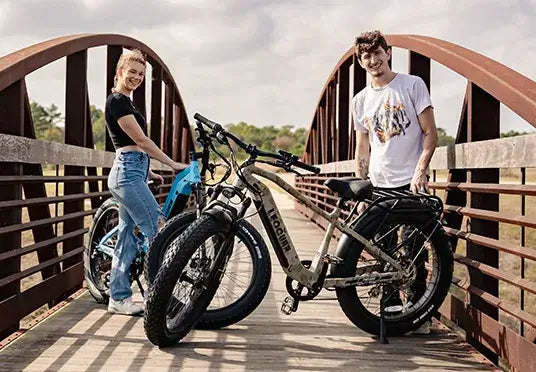
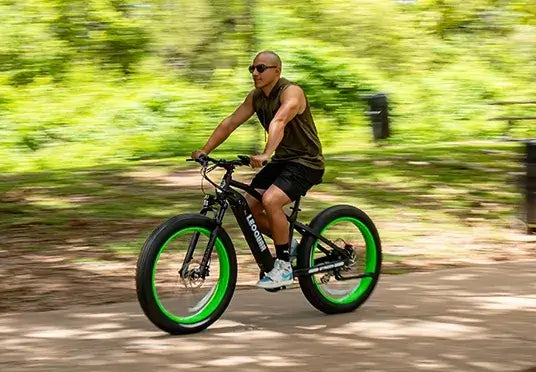
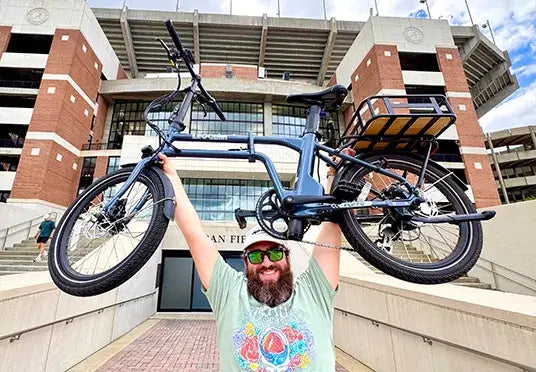
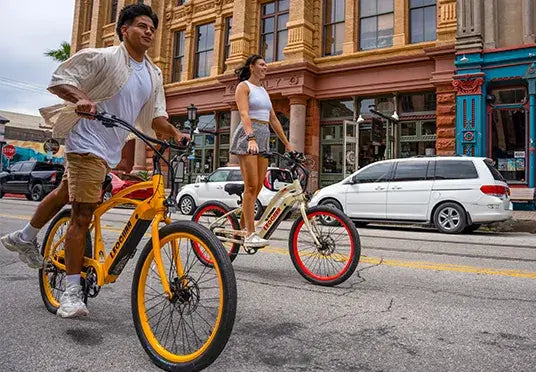
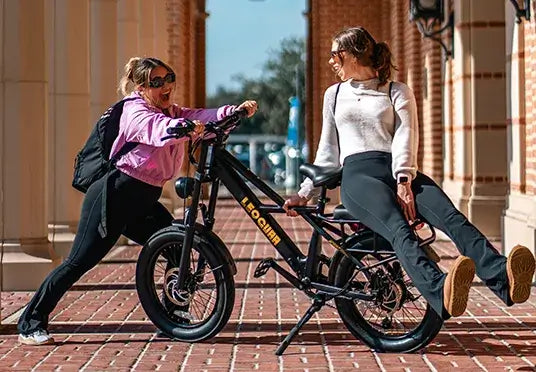
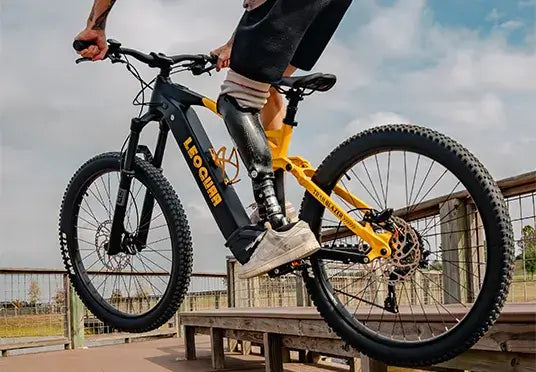
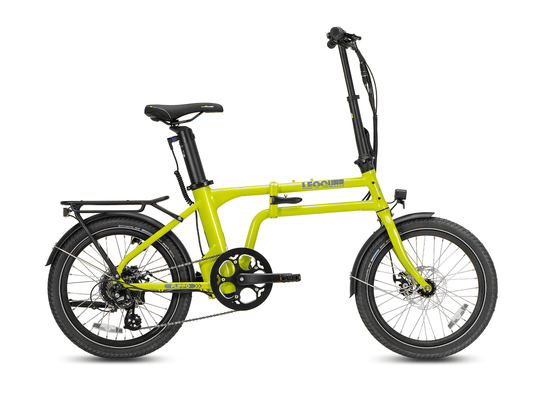
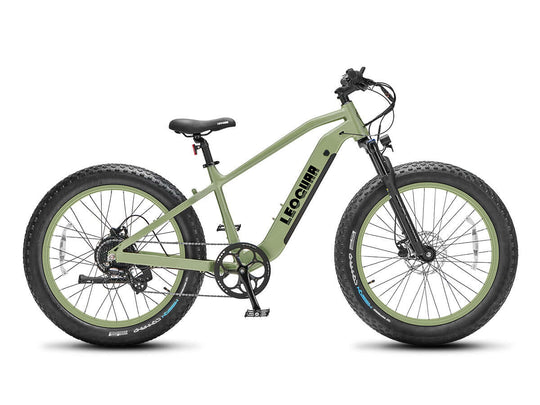
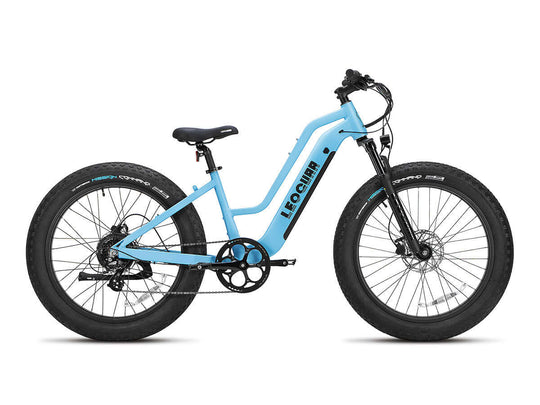
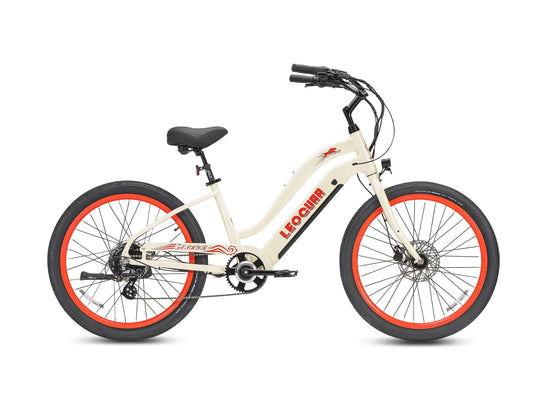
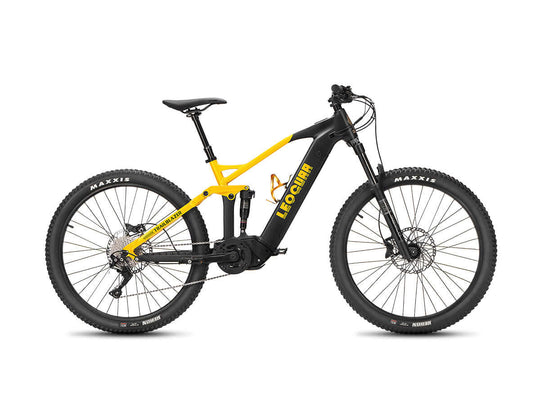
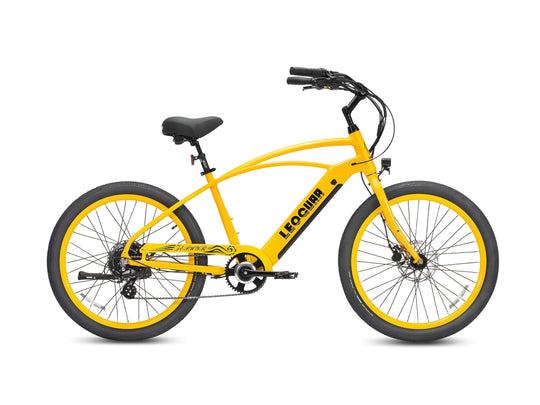
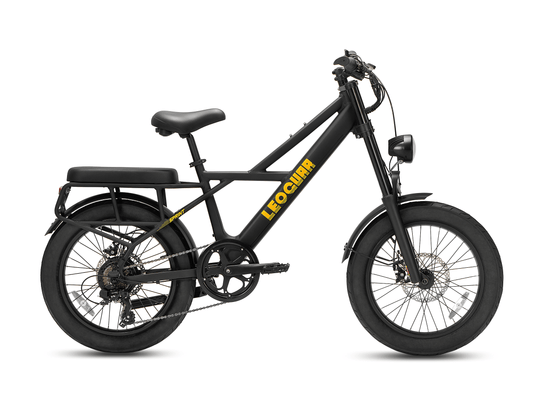
















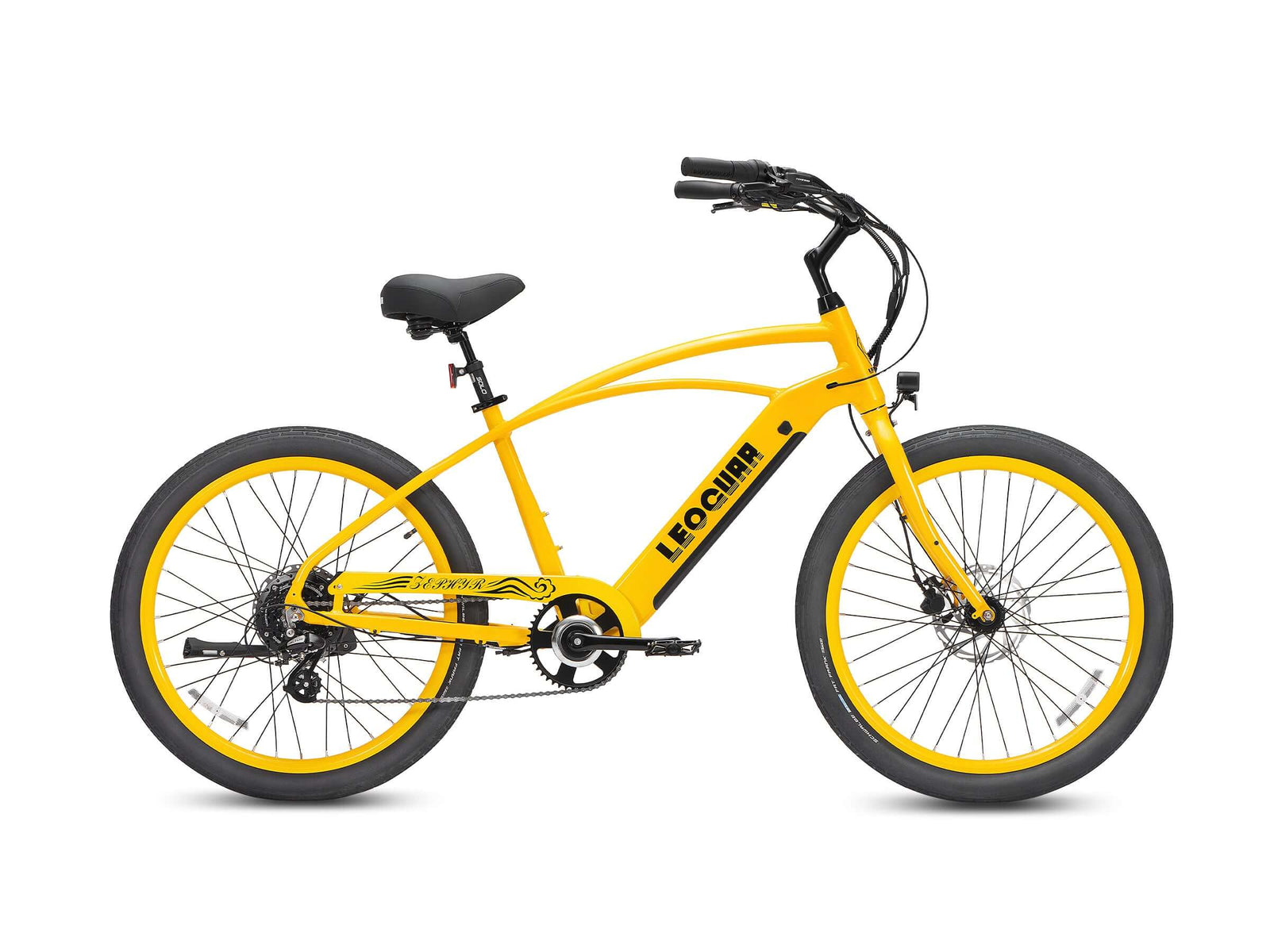








Leave a comment